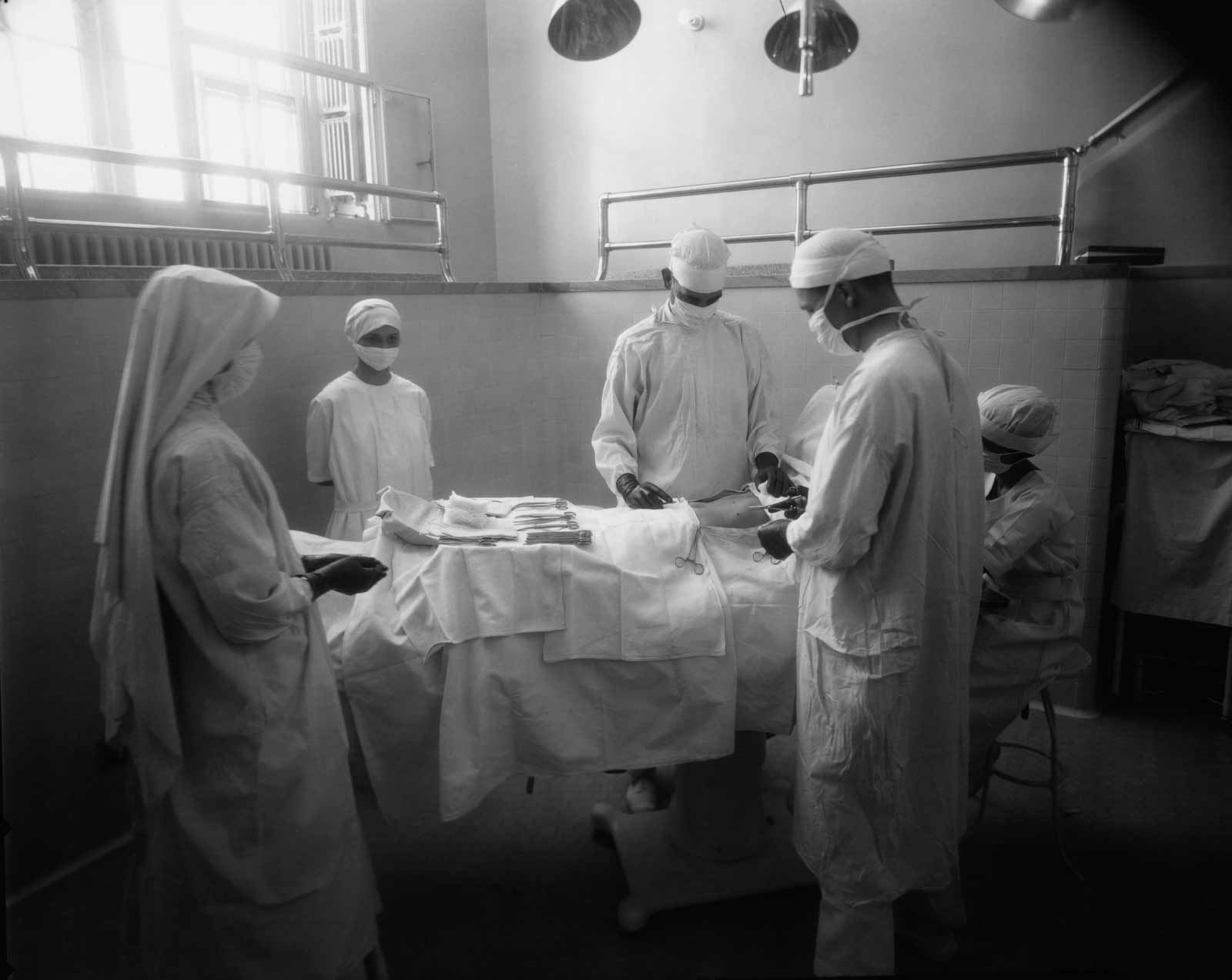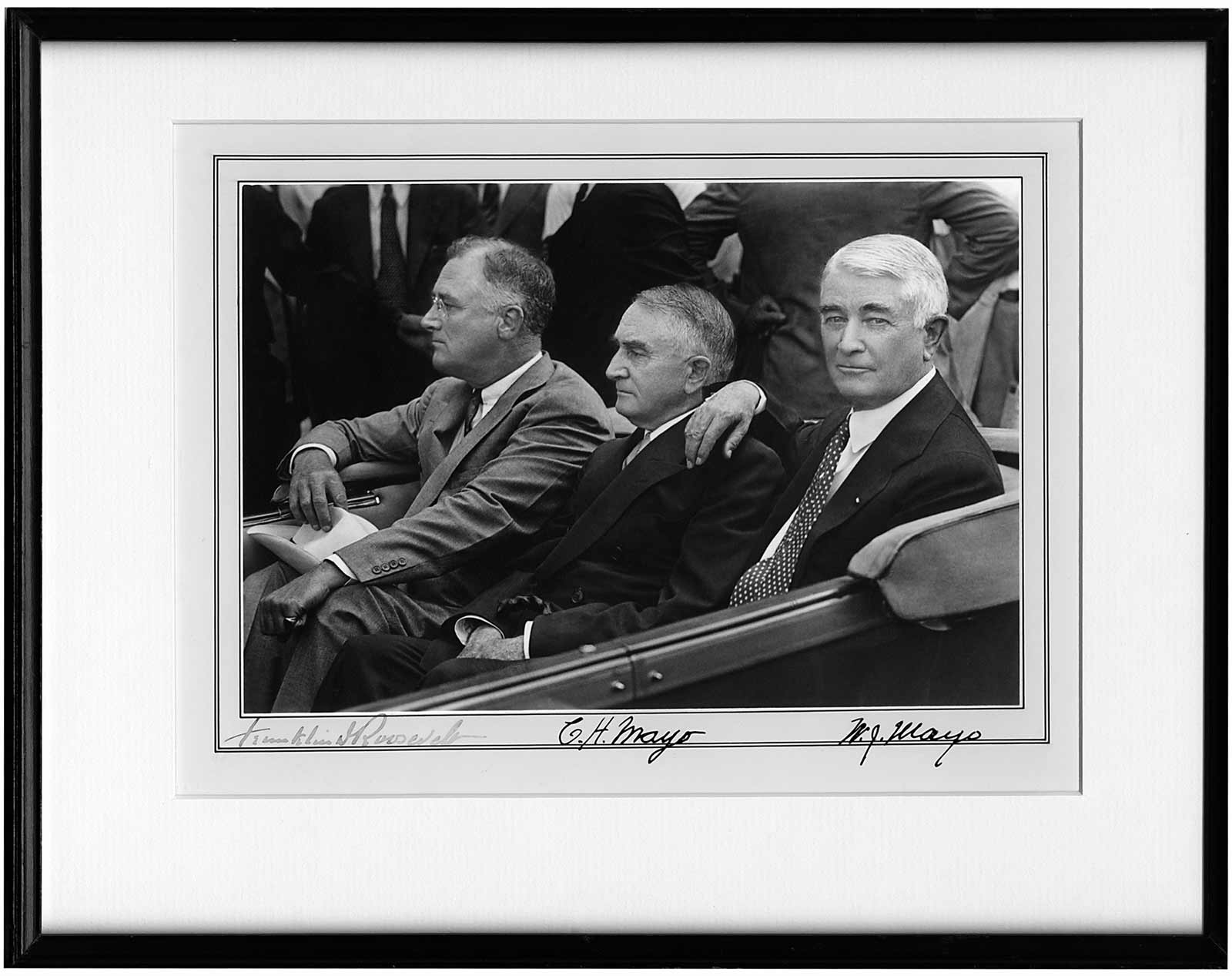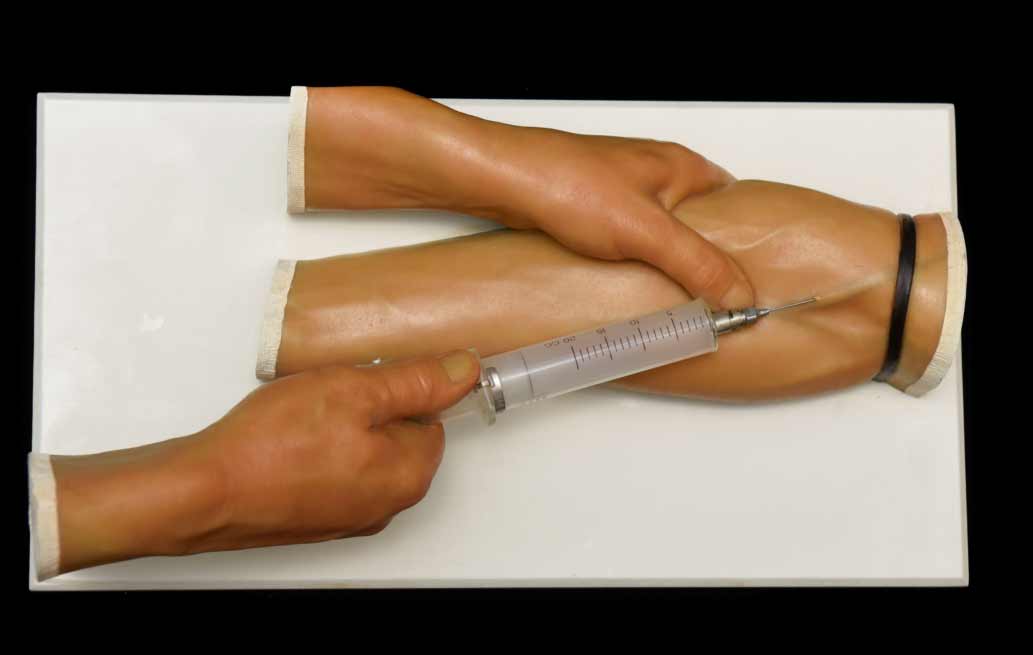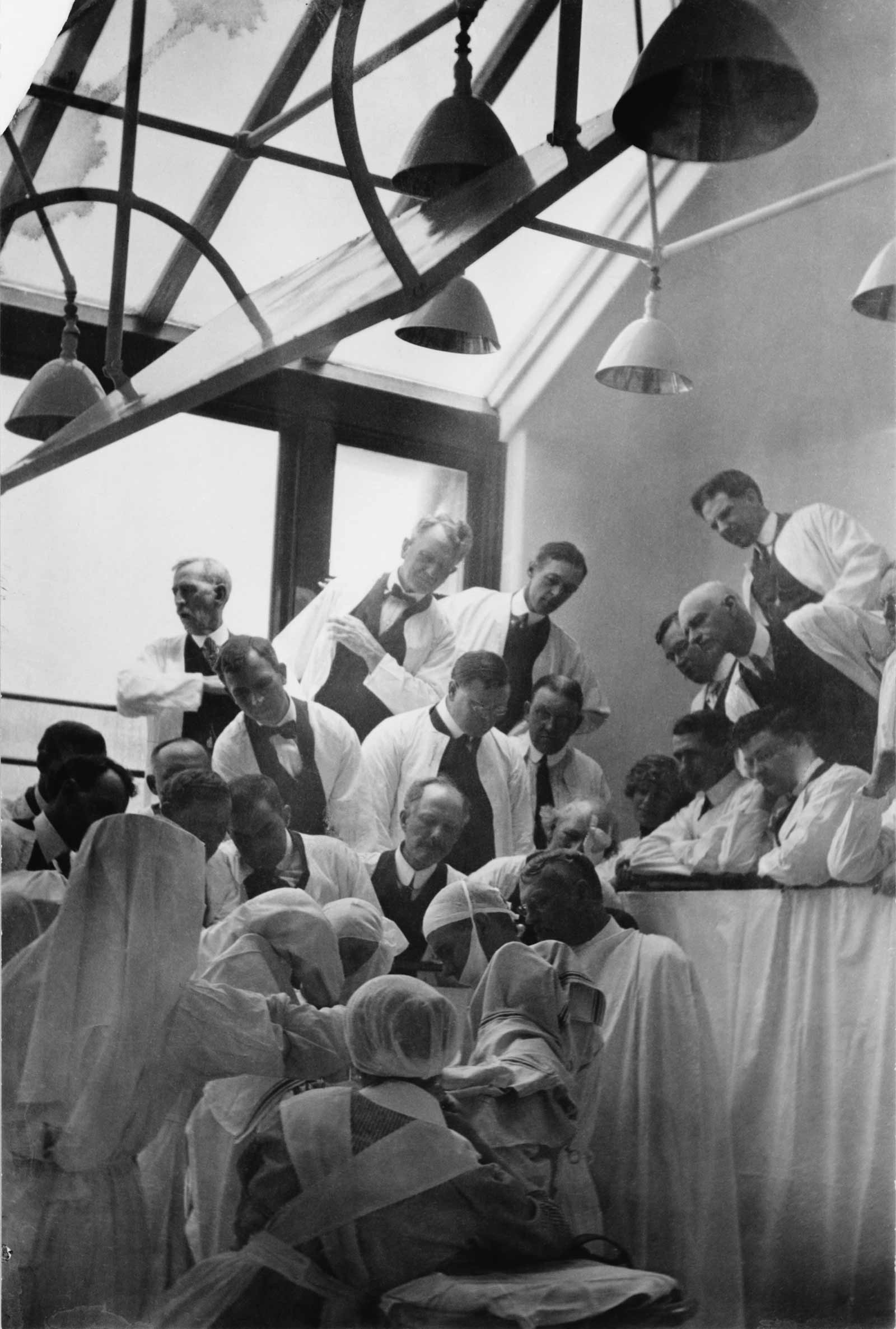Visiting a cousin in an otherworldly alpine sanitarium, Hans Castorp, the hero of Thomas Mann’s The Magic Mountain, succumbs not just to the lung-rattle his cousin has checked in to cure but also to the hospital’s cult-like allure and its promise: something beyond health. I felt like Hans on my own sojourn, some months ago, at the Mayo Clinic, Minnesota’s lowland answer to Mann’s pristine peak.
The Mayo has long been ranked among the best hospitals in the United States, widely treated even by those who’ve never been there as the ultimate medical authority, as well as last resort. When my father, in his thirties, was dying from a little-understood disease, the query always posed—breathlessly so—was, “Have you tried the Mayo?” There were urgent conferrals on the phone: “Pick up the other line! The Mayo!” Out of the cacophony of desperation, the name chimed cleanly, supremely. My father never made it there, daunted by the money, the distance, the mythos of the place. Decades later, with a rare permutation of the same ailment that no doctor I’d seen had been able to treat, I recalled the talk about the Mayo and found that the world’s nearly sole, and top, expert was there.
The clinic dates from 1883, when a deadly tornado propelled a local order of nuns into a self-taught crash course in nursing. The nonprofit hospital they founded, with help from a surgeon named W.W. Mayo and his sons William and Charles, would be known as the “Miracle in a Cornfield.” By the 1920s, it had vastly expanded to accommodate the influx of sufferers drawn by its reputed wonder-cures. The Queen Mother of Egypt, Ernest Hemingway, Lou Gehrig, Jack Benny, Lyndon Johnson, and the Dalai Lama have all been patients there. 1.3 million more came to the Mayo just last year.
When I arrived as a patient myself, I was told that Ken Burns had just left. In his new documentary, The Mayo Clinic: Faith—Hope—Science, the filmmaker ascribes the institution’s success to groundbreaking advances in both medicine and its delivery: the human side of care. Most important, he finds, among the Mayo brothers’ innovations was to place doctors on salary rather than paying them per appointment so that they could devote as much time and focus to a patient as her condition required. Their partner Dr. Henry Plummer, the mad genius of the operation, pioneered many of the ventilation, sterilization, data, and communications systems still in use in hospitals throughout the world today. Plummer is credited, for instance, with inventing the unified patient record, in which notes and test results from different doctors over time are gathered in a single file toward a full diagnostic portrait. Ever the perfectionist, Plummer then built a pneumatic tube system to convey the records between offices and, with nearby mills and chemists, engineered longer-lasting paper and ink than were then available on the market. A signed photo the Mayo archive holds of Franklin Delano Roosevelt with the brothers Mayo shows their script, made with their own pens, crisp and dark to this day, while FDR’s has faded.
Most impressive among the clinic’s historical artifacts are the alarmingly lifelike wax anatomical models produced from the 1930s through 1980s by sculptors brought to work in the Mayo’s design department. Like their Italian predecessors from the late Renaissance onward—such as Clemente Susini’s lurid eighteenth-century Anatomical Venus figures—the Mayo’s were created for teaching purposes, as ersatz cadavers, yet are so exquisitely crafted as to far exceed that purely technical goal. What delicacy the Mayo versions may lack, compared to their Continental counterparts, they gain in American freshness and frankness. Any of the Mayo’s models might double for the boy next door. And, in effect, they sometimes did: a series of the models replicates work injuries from the surrounding rural area, such as one that shows a farmhand impaled through the rectum by a pitchfork.
Burns doesn’t mention the wax models. In Europe such models are preserved and displayed as masterpieces, yet the estimated 3,000 Mayo figures have for the past thirty years been packed in cardboard boxes in a medical warehouse cooled only by industrial fans. I saw a sampling of the models by accompanying an archivist on her rounds; they are not available for public view. Many need cleaning and repair, and the archivist’s time is limited due to her other duties. Donors—of which the Mayo has many, from billionaires to grateful poorer patients who come, one official told me, bearing “coffee cans of change”—may understandably prefer to contribute toward medical cures, but these archival treasures are also in need of funding.
Advertisement
The fineness of the wax figures struck me as yet one more example of the thoroughness and thoughtfulness of almost every aspect of the Mayo I encountered. Before I flew to Minnesota, I was advised by the registration staff to take a virtual guided tour of the facilities so that I could feel as if “welcomed back” to a familiar place. The clinic’s lobby featured a grand piano played by volunteer musicians from among the staff and townspeople, as well as original Rodins and Mirós. Instead of blaring TVs, the doctors’ waiting areas held jigsaw puzzles in the midst of completion: each visitor might fit a piece or two into a growing nature scene before being called in. There were “greeters” to shepherd guests through the halls, “quiet rooms” where overwhelmed patients or caretakers could nap, and a chapel with a labyrinth-patterned floor for “walking meditation.”
Surgery recommended in my very first consultation was scheduled for the next morning, not months ahead. The procedure was offered nowhere else in the US; no specialist I’d spoken with in New York, New Haven, or Boston had even heard of it. For relief of mysterious spells of faintness and aches, I was sent —along with a PTSD-plagued veteran, and a forklift operator knocked from her perch by a crash—to a workshop on exercises to soothe our own neural-system flareups. This included an app then still in development that showed an image of a temple door that we could open only by lowering our heart-rates, as measured by gizmos clipped to our ears. The more will I exerted in my mind the more tightly the door shut. The less control I sought the more it gave way to reveal a seascape beyond. When I tensed up again it slammed, and I loudly swore, shattering the calm of the room. Though the app’s New Age interface had made me skeptical, it was hard, and when I later tried the techniques on my own, I did in fact feel a bit better.
During my stay, I was startled to hear the clinic’s founders gossiped about by staff as if they were, old dears, still roaming the campus: hardy (“Dr. Will”), gentle (“Dr. Charlie”), saintly (the nuns), or kooky (Plummer). Trivia abounds: one devotee recently wrote in to the town paper to query the difference in the Mayo brothers’ heights. (Answer: about three inches). Burns’s film resounds with similar hagiography, and drags with needless details like a minor character’s exact date of death, as if a quiz was to follow. Soft-focus testimonials to the Mayo from patients both unknown and well-known—among the latter, the late John McCain—frequently lead the film to seem less a documentary than a commercial.
At other points, however, the film can be riveting. A concert violinist who develops a tremor is forced to stay awake during surgery and play his instrument so that surgeons can determine what part of his brain is responsible, and is then outfitted with what he calls a “garage-door opener” allowing him to zap the tremor off when he needs to perform. A young woman who glows with vitality carries—impossibly, it appears—a terminal disease. A doctor reflects that each “physician has a private graveyard at the back of their minds” of all the “patients they failed.” Even the Mayo makes errors and meets defeat.
The film acknowledges other problems as well. The Mayo was late to admit African-American doctors to its ranks. It does not take patients without insurance who do not have the means to pay. A wrenching segment tracks a long-disabled older patient at the Mayo’s Florida satellite clinic from elation at finally receiving helpful treatment to heartbreak when her husband’s job loss means that it is curtailed.
Speaking by phone with me, Burns echoed Mayo materials stressing that the clinic addresses “the whole patient,” not “just” the body. For me, that hierarchy was reversed: a note I scrawled to myself during my time there reads: “Interior weakness (struggling to ignore, hide, all my life) + (‘public’) exterior = full legitimate human.” Before I’d come, I’d had no problem with the rest of me; what my own “Magic Mountain” provided was the space, time, concentrated care, and sense of dignity I needed to have, or be, a body at all.
Advertisement
What would it take for all patients, of all backgrounds and economic strata, to receive that level of attention wherever they might be? The bar may be high, but—as the Mayo’s history and offerings show—it is not unreachable.
Ken Burns’s The Mayo Clinic: Faith—Hope—Science aired September 25 on PBS.








